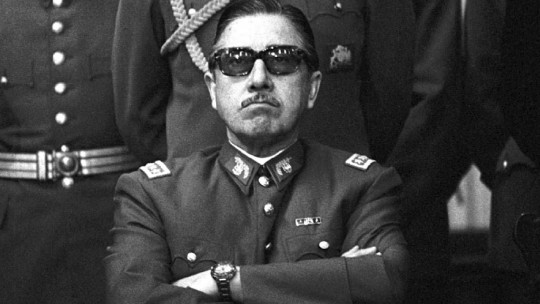Participatory leadership is characterized by allowing the participation of all employees in the generation of alternatives and in decision making.
In this way, Victor Vroom and Phillip Yetton propose different types of leadership depending on the degree of participation of subordinates and the way decisions are made. Likewise, the leader’s type of behavior will not be rigid, that is, it will adapt to the characteristics of the leader and subordinates and the task style.
In this article we will talk about participatory leadership presented by Vroom and Yetton what types of leadership they describe, what variables they can affect and what advantages and disadvantages it shows.
What is Vroom and Yetton’s participatory leadership model?
The participatory leadership model was proposed by Victor H. Vroom and Philip Yetton and later revised by the same Vroom and Arthur G. Jago, focusing mainly, as its name indicates, on the relationship between leadership and participation Thus, within leadership theory there is a special focus on how the leader allows the participation of his subordinates and influences them and decision-making.
Thus, there are a series of assumptions that must be met in the application of the leadership method: the behavior carried out by the leader must be specific and not admit confusion; The same leadership method cannot be applied to all situations equally; we must assess the problem and the context where it occurs to know how to proceed; the method used in one situation must be independent of the method used in a different circumstance; there are social processes through which subordinates can solve problems; and the leadership method will be different depending on the number of subordinates.
Types of leadership according to the degree of participation
Depending on the degree of participation of subordinates and the way of guiding the task and making decisions, we can talk about 5 different types of leadership.
1. Majority leadership
In the case of majority leadership The final solution is intended to be a consensus among the different workers That is to say, everyone’s opinion is taken into account, listened to and taken into account, both the leader and the subordinates, ensuring that the result is agreed upon and accepted by everyone.
2. Collaborative leadership
In the collaborative leadership mode, the different workers are also taken into account, evaluating the possible alternatives, but the difference is that on this occasion There is a distinction between the different functions performed by each subject according to the level of responsibility they have
3. Adaptive leadership
As its name indicates, this type of leadership It will be applied through different decision-making strategies depending on the type of issue to be addressed That is, the mode of action and the degree of participation will vary depending on the situation.
4. Inertial or passive leadership
In inertial or passive leadership little or no participation from subordinates is allowed in decision making. They are given a certain autonomy and independence in the way they act, but it is easily withdrawn if necessary.
5. Hierarchical or authority leadership
In this case we observe a strong hierarchical structure in the organization. Thus, Decisions are made by the subjects at the top of the hierarchical pyramid and the lower levels of the pyramid, the subordinate subjects, must only obey.

Leadership Behavior Variability
There are different situational variables that influence the determination of the degree of participation and the type of relevant leadership behavior. We will take into account: the level of information and experience that the leader has to be able to make the decision alone; the degree of information that subordinates show to be able to make a good decision; the structure that presents the problem; the probability and degree of acceptance that subordinates show regarding the leader’s decision.
Other variables that will be assessed will be the level of motivation that shows subordinates to participate in the company’s objectives, as well as the probability that conflict will be generated between subordinates due to difference of opinions in decision making.
In this way, we see how the leader’s behavior can vary depending on the situation, allowing you to adapt to different circumstances ; We must take into account the characteristics linked to the leader and the subordinates, the relationship and dependency established between them and the type of task that must be carried out.
Advantages and disadvantages of participative leadership
Now that we know better what participative leadership consists of and the different variables and factors that can influence the level of participation of subordinates in decision making and the type of behavior displayed by leaders, we will mention the main advantages of this mode of leadership, as well as the disadvantages that it may entail.
Advantages
In general terms, the advantages are due to the better work that is done in groups, to the possibility of generating a greater number of alternatives if a greater number of people participate in the discussions and decision-making.
1. Greater variety of alternatives
As we have already seen, by allowing more people to participate in the decision-making, it will be easier to generate a greater number of different alternatives, thus making it more likely that an effective solution will be found.
Similarly, the participation of subordinates also facilitates greater creativity and the possibility of finding new solutions not previously considered
2. Improves worker satisfaction
The participatory leadership mode helps workers be more satisfied by feeling more listened to and valued Thus, we will observe that subordinates are more motivated, act more autonomously and responsibly, and perceive their work and role in the company as more effective and useful.
Greater satisfaction will also lead to less job abandonment and employee turnover, thus helping the continuity and development of the company.
3. Greater employee engagement
Linked to the previous point, if employees feel that their opinion is valued in their workplace and they feel more satisfied with the role they perform, they are more likely to commit to the company and act in its best interest
4. Unite workers
If we allow all employees, regardless of their rank, to participate in the discussion and decision making, we will help unite the group and establish links between different workers, since It will be easier for them to perceive themselves as united and acting together to achieve the same goal with which everyone agrees.
5. Allows you to obtain the best decision for the company
By discussing each person’s alternatives, it is more likely that the decision we make will benefit the company. Instead, When decision-making is made individually, the likelihood of taking one’s own circumstances into account increases seeking one’s own benefit and benefiting oneself.
Disadvantages
In reference to the disadvantages, we will see that they are mainly due to a greater time requirement for this type of leadership to be effective and that if it is not carried out adequately it may end up being carried out in an erroneous manner, ceasing to be functional.
1. It requires more time
As expected, if a greater number of people participate in decision making, The time required to carry out this action will be longer, since it will be necessary to meet and reach an agreement , showing a greater number of alternatives. Likewise, in emergency situations, where it is necessary to make a decision quickly, participatory leadership may not be functional.
2. Greater influence of some of the workers
It may be that, if this type of leadership is not executed well, we will not be able to really get all the members of the team to participate and finally only a few influence and decide, those who have the easiest time being active For this reason, it is essential to ensure that all employees give their opinion and express possible alternatives.
3. They increase the possibility of disagreements between certain workers
Sharing different opinions, allowing different points of view to be discussed, benefits the production of a greater number of alternatives, but at the same time disagreements, differences, among some workers are more likely to increase which could lead to a conflict situation.
In the end, employees must be aware that it is not possible to execute all the alternatives and that, therefore, this should not be a reason to get angry if their proposal is not chosen.









